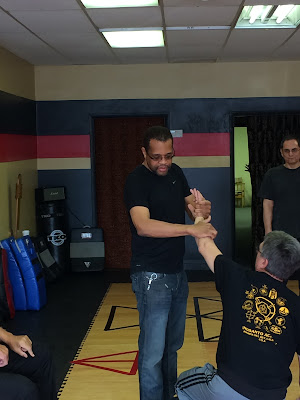Our version of silat utilizes forms — drills — to practice what we consider the most effective motions for fighting.
These are, for the purposes of learning, broken down into two major areas: upper and lower body. We call the upper body stuff — head, hands, elbows, shoulders, torso, djurus.
The lower body motions, stepping, kicking, sweeps, knees, hips, are collectively called langkas.
That’s most of the Indonesian terminology I’ll inflict on you.
One can practice djurus seated in a chair; for practical purposes, we combine these with the stepping, so when somebody says, let’s practice our djurus, that means do both together.
Martial arts are all the same, in that they utilize the same basic human components. There are only so many ways to push or pull, which what muscles driving bones do, and, actually, voluntary muscles only contract or relax, and thus only pull, so the push aspect is just a different kind of lever.
At the high levels, martial arts tend to look alike, you are boxing, wrestling, or a combination thereof, an adding weapons that smash or cut just extends your range and makes you more dangerous.
Push and pull are also hit, block, parry, grapple, etc., depending on circumstances.
To learn ways of dancing around incoming danger, we further break the stepping stuff down into geometric patterns: straight line, triangle, square, cross, and, another Indonesian term, pantjar, which is a combination of the others. Also, especially with weapons other than biological, we also work the circle.
You don’t fight this way, of course, thinking and chosing patterns on the ground, but each of these will teach you ways to reposition yourself in what we consider an effective manner, depending on the nature of an attack.
One attacker coming in, how big, how fast, is he armed? might dictate which direction you move. Two attackers? Four?
One size does not fit all.
The theory is, once you learn various ways to react to differing circumstances, you can do so without having to think about it, and this is faster and more effective than contemplative consideration. Thought is generally too slow, when push comes to shove. Or, in the words of our late Pendekar Paul, “If you think, you stink …”










